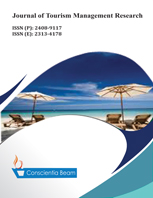An Empirical Investigation between Foreign Direct Investment (FDI) and Tourism in Bangladesh
DOI:
https://doi.org/10.18488/journal.31.2020.71.110.121Abstract
We examine the empirical relationship between FDI and tourism in Bangladesh by employing the annual time series data from 1972 to 2017. Standard econometric techniques, like Augmented-Dickey Fuller (ADF), Phillips-Perron (PP) and Zivot-Andrews structural break augmented unit root tests, Johansen cointegration test, Granger causality test, Vector Error Correction Model (VECM), Dynamic Ordinary Least Square (DOLS) and Autoregressive Distributed Lag (ARDL) estimation methods and Cumulative Sum (CUSUM) stability test have been applied in this paper. Variables are found to be stationary at first difference form. Furthermore, cointegration results show concerned variables are associated in the long run. We find both short run and long run causality running from FDI to tourism in the case of Bangladesh but not vice versa. From the long run estimation results of DOLS and ARDL, we find that a 1 million USD increase in FDI will increase tourism receipts by 0.065 and 0.062 million USD respectively. Our results are expected to provide guidelines to the policymakers to formulate the sustainable tourism policies in Bangladesh.

